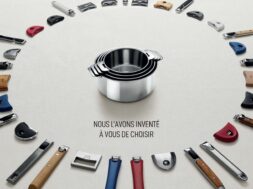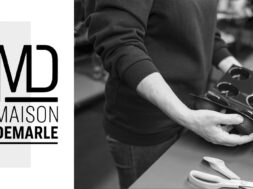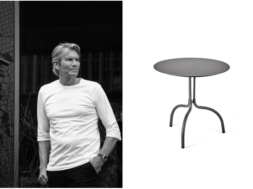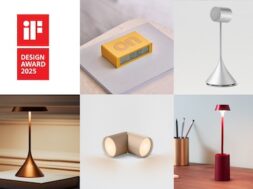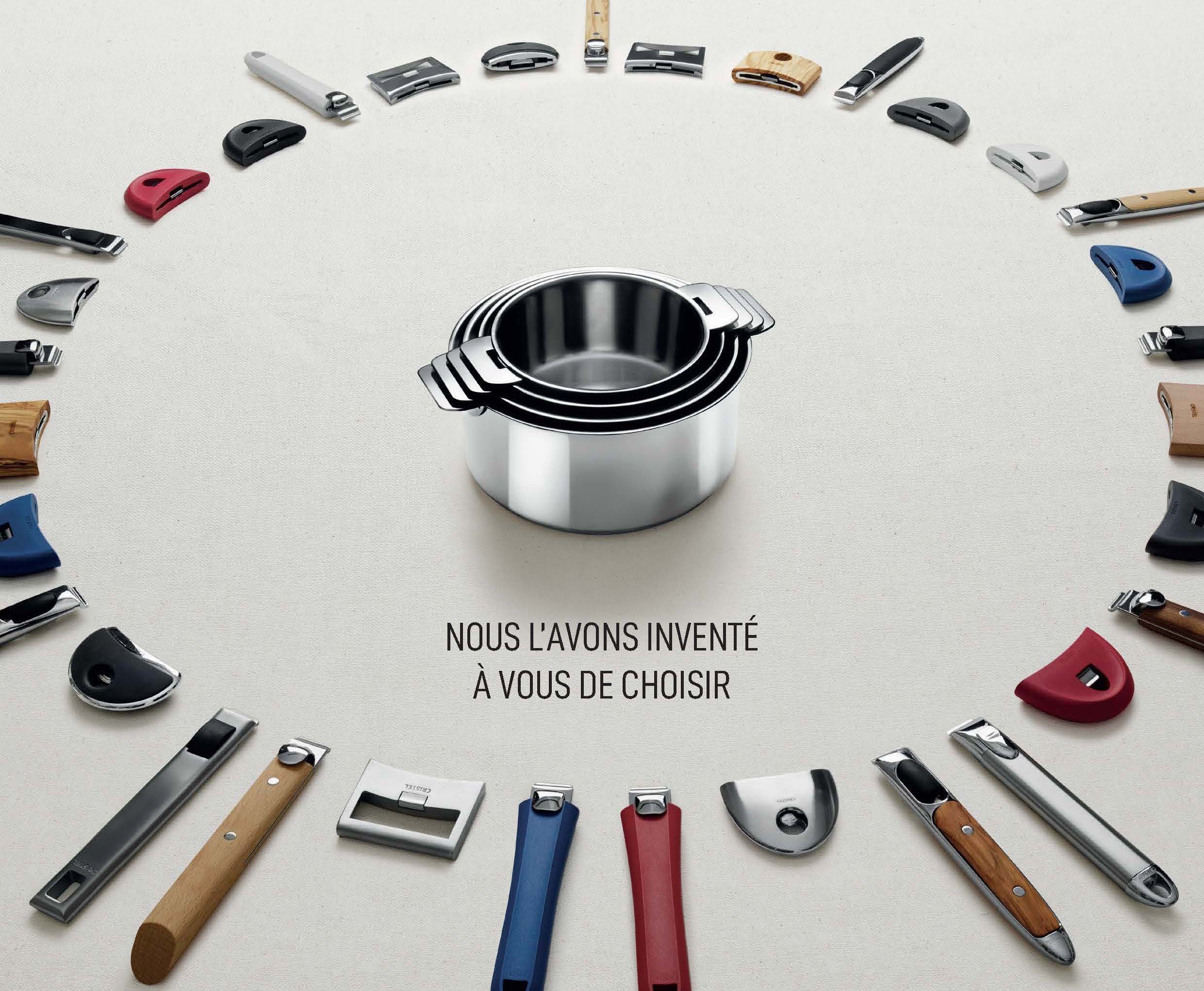
Removable Concept by Cristel: the invention that changed the history of cookware
Almost 40 years ago, Paul Dodane invented the concept of cook-and-serve that led Cristel to success. Here is the story of an invention that transformed the world of cookware. Even today, Cristel’s removable concept stands out from the crowd. A look back at an innovation that has shaped the modern history of product design.
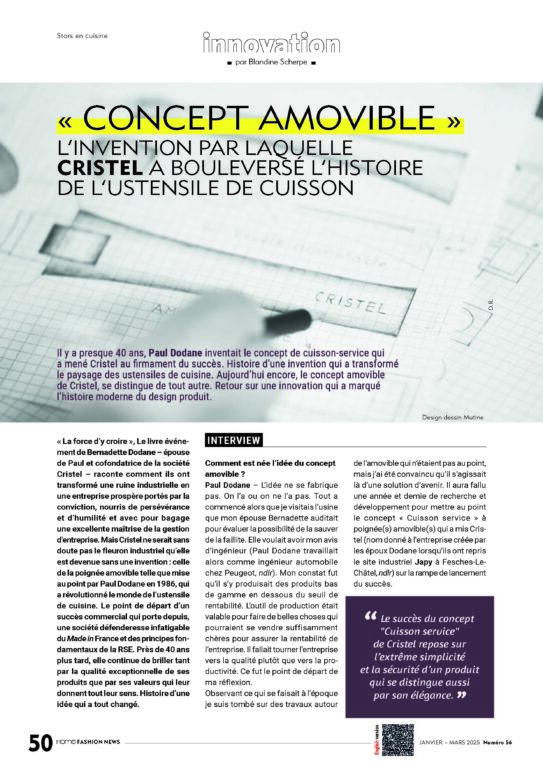
‘La force d’y croire’, the eventful book by Bernadette Dodane – Paul’s wife and co-founder of Cristel – tells the story of how they transformed an industrial ruin into a thriving business, driven by conviction, fuelled by perseverance and humility, and backed by an excellent understanding of business management. But Cristel would probably not be the industrial flagship it is today without one invention: the removable handle developed by Paul Dodane in 1986, which revolutionised the world of kitchen utensils. This marked the beginning of a commercial success story that has carried the company ever since, as a tireless defender of Made in France and the fundamental principles of CSR. Nearly 40 years on, the company continues to shine as much for the exceptional quality of its products as for the values that give them their full meaning. Here’s the story of an idea that changed everything.
How did the idea for the removable concept come about?
Paul Dodane – You can’t manufacture an idea. You either have it or you don’t. It all started when I was visiting the factory that my wife Bernadette was auditing to assess the possibility of saving it from bankruptcy. She wanted my opinion as an engineer (Paul Dodane was working as a car engineer at Peugeot at the time). My observation was that low-quality products were being produced, below the profitability threshold. The production tool was capable of making beautiful items that could be sold at a high enough price to ensure the company’s profitability. It was necessary to turn the company towards quality rather than productivity. This was the starting point of my thinking.
While observing what was being done at the time, I came across some work on removable systems that were not yet perfected, but I was convinced it was a solution for the future. It took a year and a half of research and development to refine the ‘Cook-and-Serve’ concept with removable handles, which put Cristel (the name given to the company founded by the Dodane couple when they took over the Japy industrial site in Fesches-Le-Châtel, editor’s note) on the path to success.
How do you explain the immediate success of the concept?
P.D. – Cristel was the first brand in the world to develop an innovative removable system, which was both extremely easy to use – the handle attaches and detaches in 1 second – and totally safe. Safety is a crucial aspect when we know that domestic accidents, even today, outnumber road accidents. Cookware is designed to handle very hot products. The handle is a key safety feature. Cristel’s handle – both then and now – provides absolute safety.
In addition to being a high-quality product offering unprecedented functionality, Cristel’s removable products were beautiful. This was a remarkable asset at a time when kitchens were becoming living spaces where meals, once eaten in dining rooms, were now shared. Our ‘Cook-and-Serve’ concept was designed to complement new lifestyles. The woman of the 1980s didn’t hesitate to break with conventions to gain comfort. She loved the idea that her saucepans could also be beautiful dishes, which she could serve at the table. Besides saving space in drawers, Cristel also helped her save time and reduce dishwashing chores. Later, our products looked great in the new kitchens of the 1990s. They also became very popular with men, who increasingly took to cooking.
When it was first presented at professional trade fairs in 1986 (Bijorhca and the Salon des Arts Ménagers at the time), the concept quickly captured the interest of retailers. It became one of the flagship products of the Galeries Lafayette Hausmann, which presented it in its ‘Creators of the Year’ corner. In just three years, Cristel had found its audience and future prospects.
What was the design approach used to develop the concept?
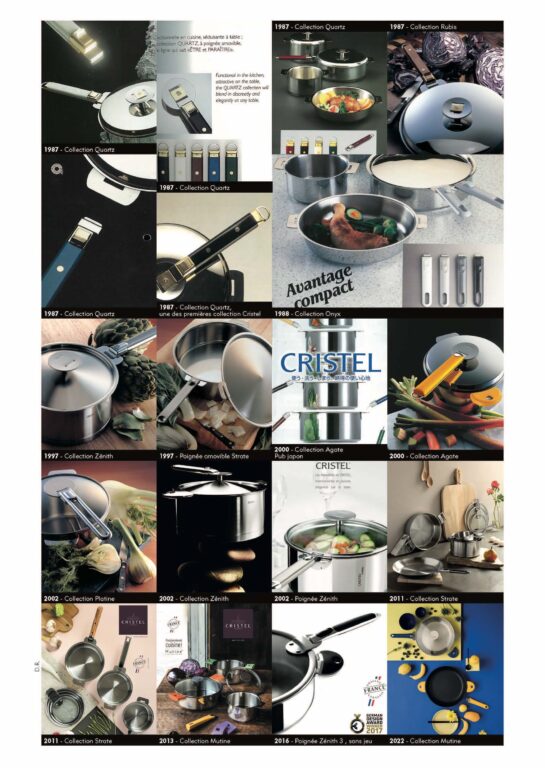
P.D – The product consists of three parts – the body, the lid, and the handle – each of which required specific development. This wasn’t easy, as at the time we had no technical means, in a factory on the brink of bankruptcy. We had to make something great with very little investment. For the body, I designed something simple that would be both beautiful and easy to manufacture, with the prerequisite of offering a high-performing cooking product.
All the stainless-steel parts were developed in-house. At that time, we had a toolmaker with golden hands, who was able to create all the tools necessary for producing each part, which had its own unique features, as both the pans and lids were equipped with a system that had to be developed to attach the removable handle.
For the handle, I took an existing handle from the factory – the reference ‘Diamant’ – and adapted it to be removable. It was developed in-house with the help of a local company specialising in micro-melting.
How has the collection developed?
P.D – The collection has developed in line with culinary trends and new market expectations. We keep a close eye on what’s going on in the kitchen and in fashion, so that we can keep up with the very latest trends. As a result, the collection has been expanded to include new shapes, sizes and non-stick coating options (saucepans, casseroles, woks, right through to the ‘biome’ healthy low-temperature cooking system). Today, there are also 18 handle models in the catalogue, differing in colour and material.
What motivated the arrival of a new generation of removable handles?
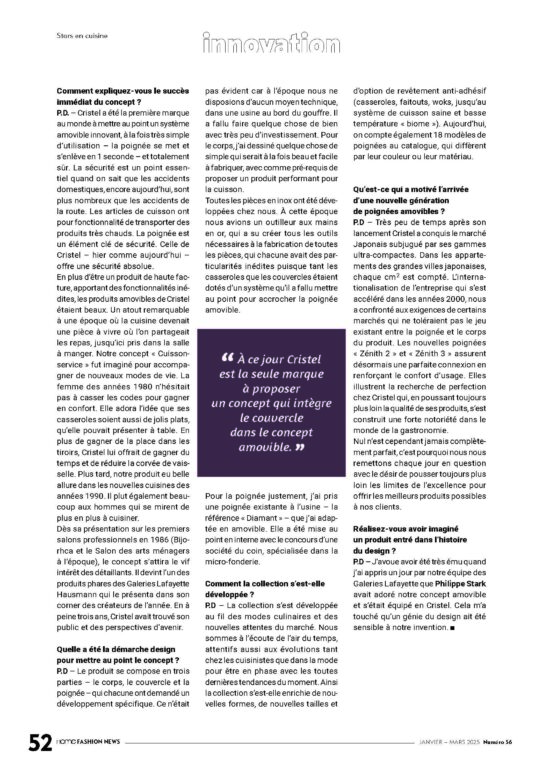
P.D – Shortly after its launch, Cristel conquered the Japanese market, captivated by its ultra-compact ranges. In the apartments of large Japanese cities, every square centimetre counts. The company’s internationalisation, which accelerated in the 2000s, exposed us to the demands of certain markets that did not tolerate any play between the handle and the body of the product. The new ‘Zénith 2’ and ‘Zénith 3’ handles now ensure a perfect connection, enhancing ease of use. They demonstrate Cristel’s commitment to perfection, as the brand continues to push the quality of its products, earning a strong reputation in the world of gastronomy.
However, no one is ever completely perfect, which is why we constantly challenge ourselves with the desire to push the boundaries of excellence further, to offer the best possible products to our customers.
Do you realise that you have imagined a product that has entered the history of design?
P.D – I have to admit that I was very moved one day when I learned from our team at Galeries Lafayette that Philippe Starck had loved our removable concept and equipped himself with Cristel. It really touched me that a design genius had been so taken by our invention.
Source: Home Fashion News Magazine – January 2025 / HFN56
